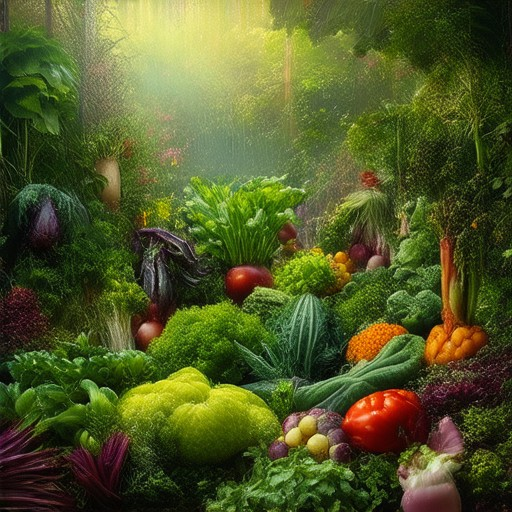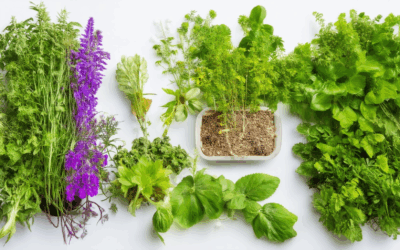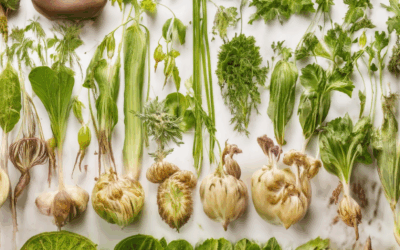Gardening enthusiasts often find themselves captivated by the allure of rare and exotic vegetables, wondering not just what they are, but why they hold such value. From solving gardening mysteries to exploring the secrets of exotic varieties, the journey of growing rare vegetable varieties offers a unique blend of challenge and reward. Whether you’re seeking to diversify your garden, experiment with unusual flavors, or achieve sustainability, the world of rare vegetables opens up endless possibilities. In this guide, we’ll delve into the most valuable crops, the most difficult to grow, and the exotic varieties waiting to be discovered. We’ll also uncover which plants are the most resilient and which are the hardest to cultivate, providing expert tips along the way. Join us as we unlock the fascinating world of rare vegetables and learn how to successfully grow them in your own garden.
Key Takeaways
– Discover the most resilient vegetables that thrive in challenging conditions, including drought-tolerant varieties like cucumbers, beets, and sweet potatoes.
– Identify hard-to-grow plants that require specific care, such as orchids, gardenias, and fiddle leaf figs, perfect for enthusiasts seeking a gardening challenge.
– Explore perennial vegetables that return year after year, offering sustainable growth with options like asparagus, rhubarb, and garlic.
What is the Most Valuable Vegetable to Grow?
The most valuable vegetables to grow depend on factors like yield, nutritional value, and culinary uses. Here’s a curated list of top contenders:
- Tomatoes : Renowned for their high yield and versatility in dishes, tomatoes are a staple in gardens worldwide.
- Cucumbers : Known for their high water content, cucumbers thrive in warm climates and are perfect for fresh snacks or pickling.
- Leafy Greens (Spinach, Kale) : Packed with nutrients, these greens can be harvested multiple times, making them a sustainable choice.
- Sweet Potatoes : Versatile in cooking and known for their long storage life, sweet potatoes are a favorite for many gardeners.
- Bell Peppers : Rich in vitamins and antioxidants, bell peppers are a colorful addition to meals and offer both beauty and health benefits.
- Carrots : Easy to grow and a root vegetable that’s used in soups, stews, and salads, carrots are a reliable crop.
- Zucchini and Pumpkin : Squash varieties like zucchini and pumpkin are highly productive and can be used in various recipes or preserved through fermentation.
- Garlic and Onions : These bulb vegetables are not only flavorful but also have a long shelf life, making them ideal for storage.
- Beets : Known for their vibrant roots and high nutritional value, beets are gaining popularity among health-conscious gardeners.
These vegetables offer a combination of productivity, nutritional value, and culinary versatility, making them some of the most valuable crops to grow in any garden. For more tips on growing these vegetables and exploring heirloom gardening techniques, visit our gardening resources .
What is the Most Difficult Vegetable to Grow?
-
Spinach
Spinach is notoriously difficult to grow due to its sensitivity to temperature and light conditions. It thrives in cool weather and requires consistent moisture, making it a challenge for many gardeners.
-
Radicchio
Radicchio, a leafy green often used in salads, is another troublesome vegetable. It requires specific soil conditions, regular watering, and protection from pests, making it less than ideal for beginner gardeners.
-
Kohlrabi
Kohlrabi, a root vegetable, can be challenging due to its bulbous shape and susceptibility to pests. It requires deep planting and regular monitoring to ensure healthy growth.
-
Beets
Beets are another difficult vegetable to grow, as they are sensitive to high temperatures and require consistent watering. Their roots can become tough if not harvested properly, adding to the complexity.
Why These Vegetables Are Challenging
These vegetables face unique challenges ranging from specific soil requirements to pest issues and sensitive growth stages. Proper planning, research, and care are essential for successful cultivation.
Growing Tips
For those up for the challenge, here are some tips:
- Choose the right location based on the vegetable’s needs.
- Implement crop rotation to maintain soil health.
- Use supports for plants like beans and tomatoes.
- Regularly monitor for pests and diseases.
For more detailed growing guides and resources, visit our gardening guides section.
Exotic Vegetables to Try
Exploring exotic vegetables can be a fascinating way to diversify your diet and discover new flavors. Here’s a curated list of unique and lesser-known vegetables that are worth adding to your culinary repertoire:
Popular Exotic Vegetables
- Heirloom Tomatoes : Known for their vibrant colors and rich flavors, these tomatoes are a favorite among food enthusiasts. Learn more
- Kale : A superfood packed with nutrients, kale offers a slightly bitter taste that pairs well in salads and soups.
- Beetroot : Often used in holistic health practices, beetroot is celebrated for its nutrient-rich properties and earthy flavor.
- Mushrooms : While commonly found, certain varieties like chanterelles and morels are considered exotic and highly sought after.
- Cucumber : With numerous varieties, cucumbers can range from sweet to sour, making them a versatile choice for many dishes.
- Bell Peppers : Available in various colors, bell peppers are a staple in both traditional and exotic recipes.
- Carrots : Beyond the orange variety, there are colorful heirloom carrots that add visual interest to meals.
- Zucchini : A versatile vegetable that can be spiralized, grilled, or roasted, zucchini is a kitchen staple.
- Spinach : While widely known, baby spinach and Malabar spinach varieties offer distinct textures and flavors.
- Radish : Radishes come in various shapes and sizes, providing a crunchy texture to dishes.
Lesser-Known Exotic Varieties
- Malabar Spinach : Originating from India, this spinach has a nutty flavor and is often used in curries.
- Chayote Squash : A tropical vegetable with a mild flavor, chayote is perfect for soups and stir-fries.
- Bamboo Shoots : Though less common, bamboo shoots add a unique crunch to Asian-inspired dishes.
- Snake Gourd : Known for its snake-like shape, this gourd is used in traditional Indian cooking.
- Jackfruit : A large fruit that’s gaining popularity for its sweet and savory taste in desserts and main dishes.
- Taro Root : A starchy root vegetable with a comforting flavor, taro is often used in Asian cuisine.
- Yucca Root : Similar to potato, yucca root has a creamy texture and is popular in South American dishes.
- Kohlrabi : A root vegetable with a crisp texture, kohlrabi is perfect for slaws and salads.
- Daikon Radish : A Japanese variety of radish with a mild flavor and crisp texture.
These exotic vegetables not only add variety to your meals but also introduce new nutritional benefits. Consider experimenting with heirloom varieties to discover hidden gems in the world of produce.
How to Get Started
Ready to incorporate these exotic vegetables into your kitchen? Start by researching local farmers’ markets or seed catalogs for availability. Old Seed offers a wide range of heirloom seeds and gardening resources to help you grow your own exotic produce. Explore our gardening guides .
By embracing exotic vegetables, you’ll open up a whole new world of flavors and nutritional opportunities. Happy gardening!
What is the Most Resilient Vegetable to Grow?
The most resilient vegetable to grow depends on various factors such as climate, soil conditions, and water availability. However, certain vegetables consistently perform well in challenging conditions:
- Cucumber : Known for its high water content, cucumbers thrive in hot, dry climates and require minimal care. They are drought-tolerant and can grow quickly in warm weather.
- Beet : Beets are highly resistant to cold temperatures and drought. They can survive frost and still produce abundant roots and greens.
- Tomato : Tomatoes are relatively hardy and can tolerate heat and drought once established. They are a popular choice for many gardeners seeking resilient plants.
- Pepper : Peppers are heat-tolerant and can withstand drought conditions. They are a great option for warmer climates or xeriscaping gardens.
- Eggplant : Eggplants are known for their ability to adapt to heat and drought. They prefer well-drained soil and require little watering once established.
- Carrot : Carrots are drought-tolerant and can grow in poor soil conditions. They are a versatile vegetable that thrives in many environments.
- Sweet Potato : Sweet potatoes are incredibly resilient, thriving in both wet and dry conditions. They are a staple in sustainable gardens due to their low water needs.
- Zucchini : Zucchini is a heat- and drought-tolerant vegetable that grows quickly and requires minimal maintenance. It is a favorite among gardeners seeking high yields with less effort.
- Spinach : Spinach is relatively drought-tolerant and can grow in cooler temperatures. It is a cool-season crop that performs well in many regions.
- Kale : Kale is highly resistant to cold and heat, making it a versatile option for many growing zones. It is a nutrient-dense vegetable that thrives in diverse conditions.
- Onion : Onions are drought-tolerant once established and can handle a variety of soil types. They are a fundamental ingredient in many cuisines and are easy to grow.
For more tips on selecting the best vegetables for your garden, visit our gardening resources page.
What is the Hardest Plant to Grow?
The hardest plants to grow vary depending on factors like climate, soil type, and care requirements. Some plants are notoriously difficult to keep alive due to their specific needs, making them challenging for even experienced gardeners.
Here are some of the toughest plants to grow:
- Orchids : Known for their delicate beauty, orchids require precise conditions such as humidity, temperature control, and specific fertilizers. They are among the most demanding plants for home gardens.
- Gardenias : These fragrant plants thrive in shaded, moist environments. Their susceptibility to pests and diseases makes them a challenge for many gardeners.
- Fiddle Leaf Fig : Often called “fiddleheads,” these plants are prone to root rot and fungal infections if not kept in ideal conditions. They prefer high humidity and consistent watering.
- Boston Fern : A popular ornamental plant, Boston ferns require constant moisture and shade. They can be tricky to grow in drier climates or full sun conditions.
- Succulents and Cacti : While they seem hardy, many species of succulents and cacti are sensitive to extreme temperatures, drought, or overwatering. Proper soil drainage is crucial for their survival.
- Tropical Plants : Many tropical plants, such as begonias or impatiens, struggle in cooler temperatures or dry conditions. They require consistent moisture and warmth to thrive.
For more tips on caring for these challenging plants, check out our Orchid Care Guide and our Fiddle Leaf Fig Maintenance Tips .
Vegetable That Comes Back Every Year
When asking about a vegetable that returns annually, the answer lies in perennial vegetables . These plants adapt well to various climates and require minimal maintenance, making them ideal for gardeners of all levels.
- Asparagus : A beloved vegetable, asparagus is a classic example of a perennial. It thrives in well-drained soil and requires minimal care, returning year after year with fresh shoots.
- Rhubarb : Known for its vibrant pink stems, rhubarb is another reliable perennial. It’s often used in desserts and sauces, adding unique flavor to dishes.
- Artichoke : While artichokes may take a few years to mature, they are indeed perennials. Once established, they reward gardeners with delicious edible flowers each spring.
- Ruby Spinach : A hardy variety of spinach, ruby spinach is known for its ability to reseed itself. It’s a low-maintenance option for continuous greens throughout the growing season.
- Garlic : A staple in many gardens, garlic is a versatile and aromatic perennial. It’s valued for its culinary uses and health benefits.
Growing perennials like these offers a sustainable way to enjoy fresh produce without the hassle of planting anew each year. Whether you’re a seasoned gardener or just starting out, these vegetables are excellent choices for long-term garden planning.








0 Comments